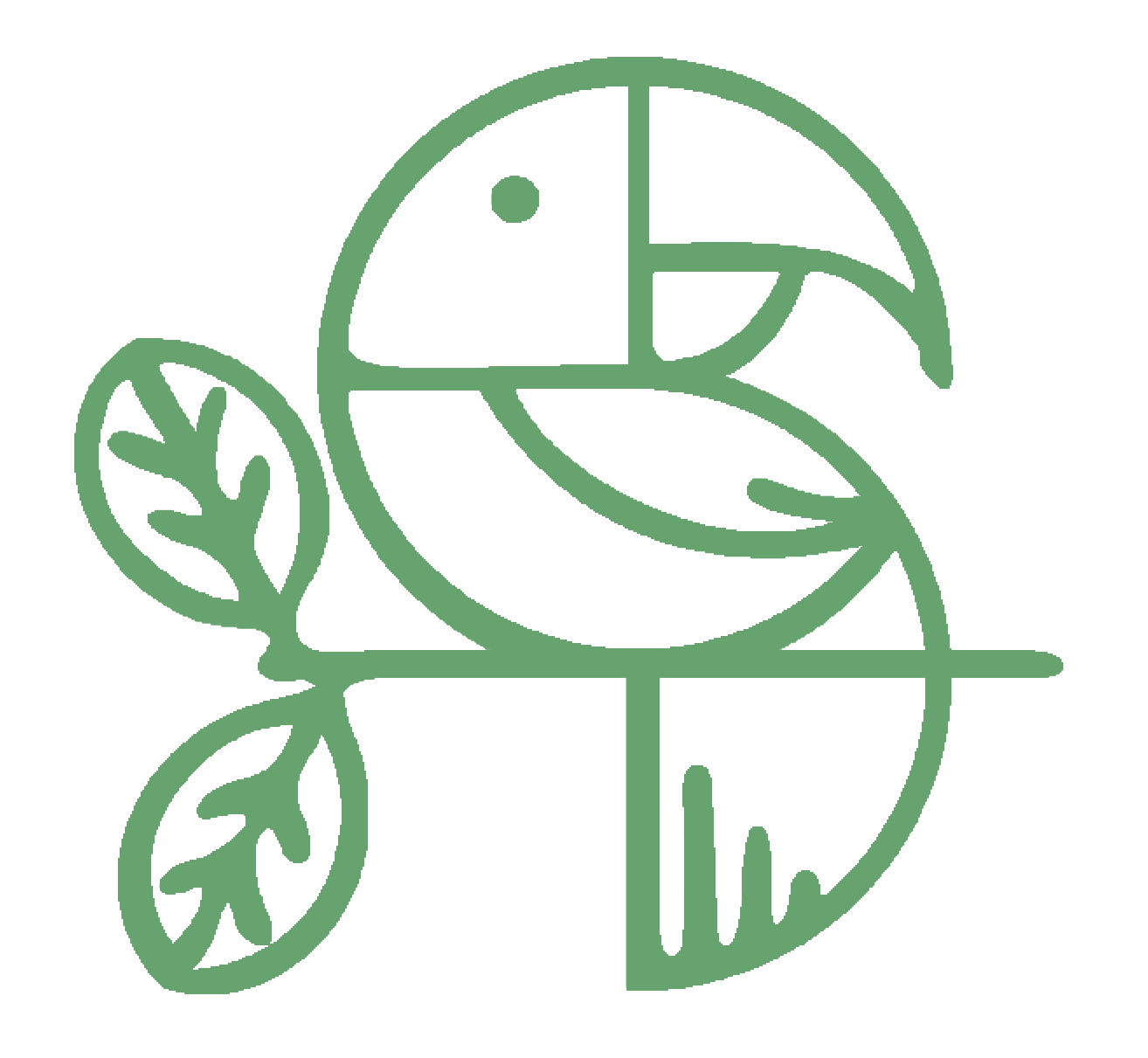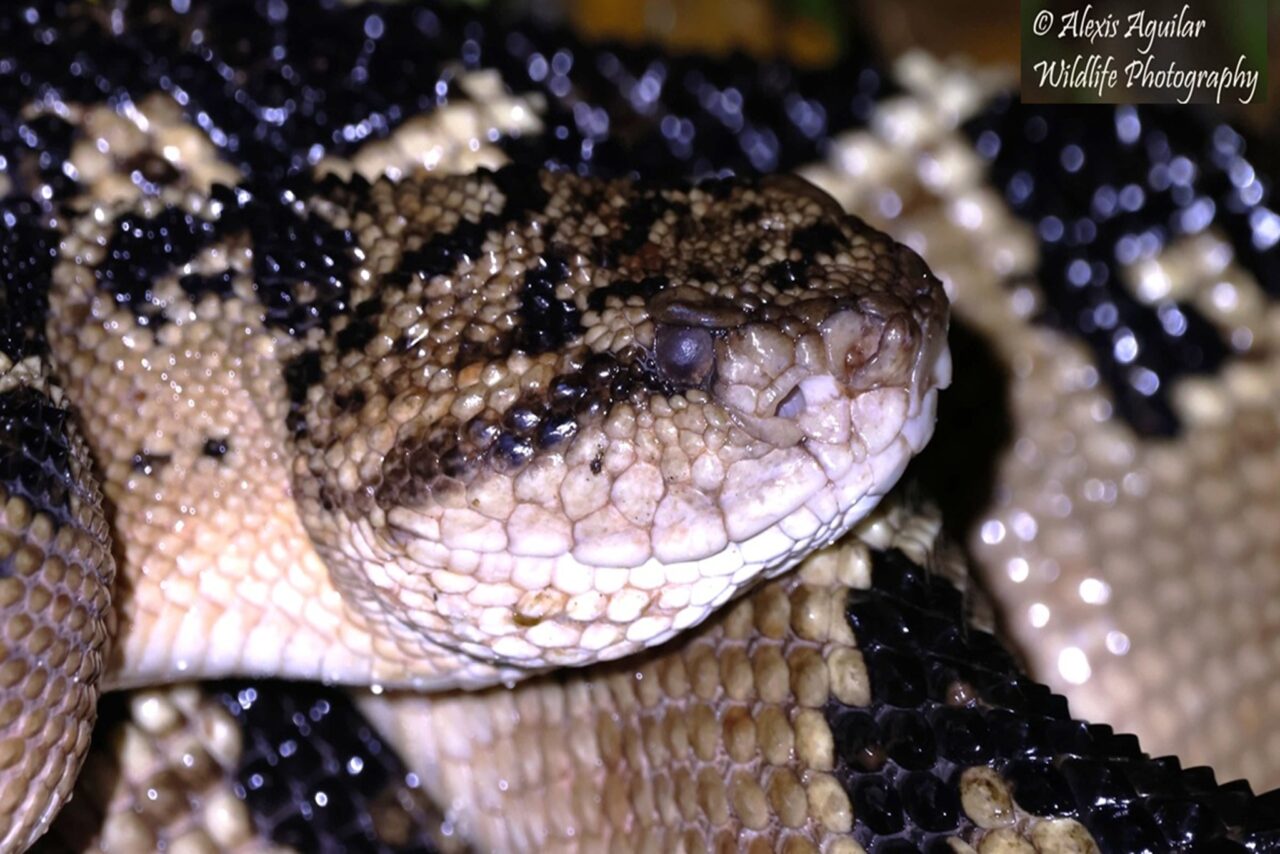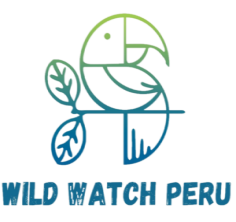Bushmaster – A Rare Encounter at Guadalupe Lodge
Hidden deep in the Peruvian Amazon, Manu National Park is a place where wildlife thrives in undisturbed harmony and ancient life pulses through every tree, trail, and river bend. With over 1,000 bird species, more than 200 mammal species, and a staggering array of amphibians and reptiles, it begs the question:
In the depths of the rainforest, the question remains: what is the most dangerous animal in the rainforest? This inquiry leads to the remarkable bushmaster.
What is the most dangerous animal in the rainforest of Manu?
The answer may surprise you—not a jaguar, nor a caiman, but a rarely seen predator that silently commands the forest floor: the Bushmaster (Lachesis muta).
The bushmaster is indeed the most dangerous animal in the rainforest, and its stealth makes it a unique predator. Over the past few weeks, travelers staying at Guadalupe Lodge, one of Manu’s leading eco-lodges, have had the rare opportunity to observe this elusive species in the wild—safely and with expert guidance. This article explores the fascinating nature of the bushmaster, its critical role in the ecosystem, and why ethical, guide-led tourism makes this encounter an unforgettable (and safe) experience.
Meet the Bushmaster:
Understanding the bushmaster is crucial as it is often labeled as the most dangerous animal in the rainforest.
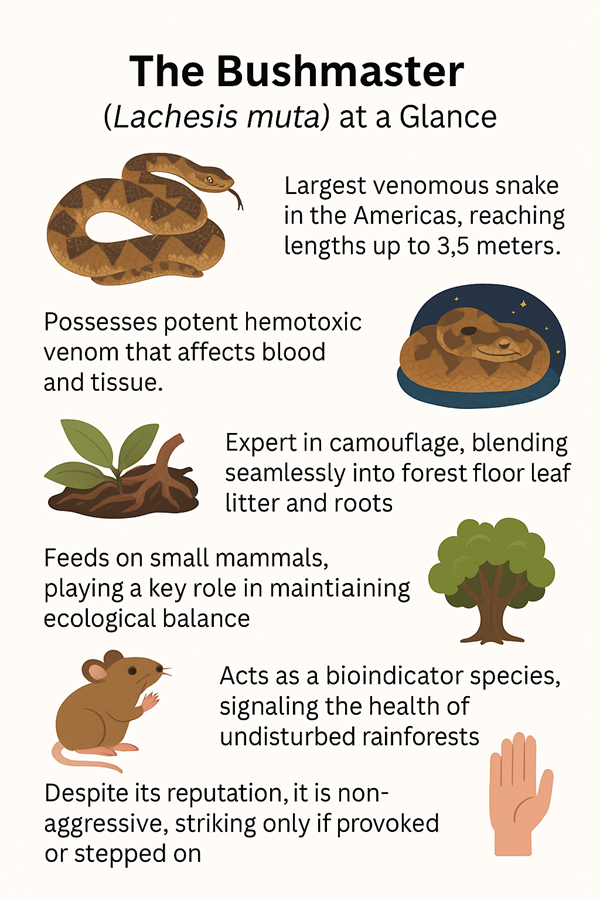
Manu’s Apex Forest Floor Predator
The bushmaster is the largest venomous snake in the Americas, capable of growing up to 3.5 meters (11.5 feet) in length. It lives in the remote understory of primary rainforests, where it remains motionless and nearly invisible thanks to its cryptic camouflage.
| Feature | Description |
|---|---|
| Scientific Name | Lachesis muta |
| Venom | Hemotoxic – causes internal bleeding and tissue breakdown |
| Activity | Nocturnal, solitary, and highly territorial |
| Habitat | Undisturbed lowland rainforest with ample ground cover |
| Danger Level | Extremely high when encountered unknowingly |
Despite its ominous reputation, the bushmaster is not aggressive. It avoids confrontation but is dangerous because of its camouflage and ability to remain perfectly still—even when humans approach unknowingly. That is why it earns its place at the top of the list when asking what is the most dangerous animal in the rainforest of Manu.
In discussions about wildlife, the bushmaster frequently arises as the most dangerous animal in the rainforest.
Bushmaster Sightings at Guadalupe Lodge, Manu National Park
Located between the cloud forests and lowland Amazon, Guadalupe Lodge is positioned within a transition zone that supports exceptional biodiversity. Recently, an adult bushmaster was sighted multiple times along the Palm Forest Trail, just a short walk from the lodge.
This snake has been seen repeatedly in the same spot over several weeks, a behavior consistent with known territorial traits. The initial discovery was made by Alexis, a local guide with extensive field experience, who immediately notified other members of the Wild Watch Peru guiding team. What followed was extraordinary: a series of sightings by visitors and guides who—thanks to structured safety protocols—were able to observe this incredible animal without risk.
“I was the first to spot this particular bushmaster—barely one meter away—coiled up near a shallow creek. At first glance, I thought it was part of the landscape; its pattern blended perfectly with the surroundings. Even at that distance, the snake remained completely still—calm, unthreatening. That’s what many people don’t realize: the bushmaster doesn’t attack unless it’s stepped on or provoked. It relies on camouflage, not confrontation. That’s why guided observation is so important. Our role isn’t just about finding the animal—it’s about ensuring safety for both guests and the wildlife.”
— Alexis, Local Guidea at Wild Watch Peru
Guided Wildlife Viewing: Safety First, Wonder Always
Over the past few weeks, guests from around the world have experienced something truly exceptional at Guadalupe Lodge—the chance to spot the bushmaster, considered by many to be the most dangerous animal in the rainforest of Manu, in its natural habitat.
This experience highlights why the bushmaster is considered the most dangerous animal in the rainforest.
Thanks to expert guiding and structured night hikes, most of the groups visiting the lodge during this period had the rare privilege of observing the snake safely—from a respectful distance, with zero disruption to the animal or the environment.

Firsthand Moments:
Over the past few weeks, several travelers who joined guided excursions with Wild Watch Peru have been fortunate enough to witness the bushmaster—the most dangerous animal in the rainforest of Manu—resting silently in its natural habitat near Guadalupe Lodge.
Thanks to respectful distance and expert supervision, these encounters were not only safe but deeply memorable. Many of our guests have generously shared their photographs, capturing the snake’s astonishing camouflage among leaf litter, creek banks, and forest roots.
Here are just a few images posted by guests who spotted the bushmaster during their stay—now proudly featured in the TripAdvisor photo gallery for Wild Watch Peru.
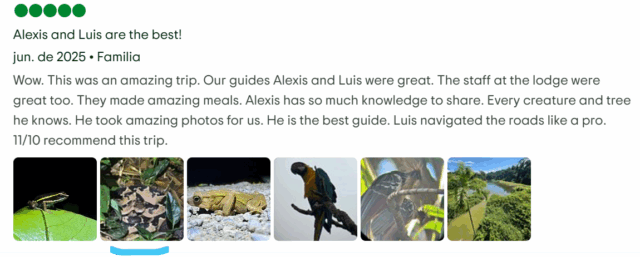
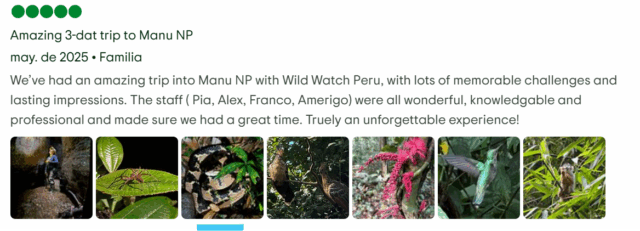
Guiding with Precision:
Ensuring Safety in the Heart of the Rainforest
At Wild Watch Peru, safety is not an afterthought—it’s the foundation of every guided experience. Our team of expert naturalists upholds the highest standards in wilderness guiding, ensuring that encounters with wildlife, including the elusive bushmaster, are conducted with vigilance, respect, and care.
How Our Guides Ensure Every Step Is Safe:
- Comprehensive Trail Briefings
Before each excursion, guests receive detailed briefings covering trail protocols, behavior expectations, and potential wildlife encounters. - Advanced Wildlife Detection Skills
Guides are trained to identify even the most cryptic species, such as the bushmaster, whose camouflage renders it nearly invisible without a practiced eye. - Non-Invasive Observation Techniques
All sightings are approached quietly and respectfully—no provocation, no disturbance—preserving natural behavior and minimizing stress to animals. - Deep Behavioral Insight
Understanding animal movements, territorial behavior, and safe viewing distances allows guides to interpret signs others might miss, while maintaining full control of the group’s positioning.
At the intersection of science, conservation, and hospitality, our guides serve as guardians of both guest safety and wildlife welfare. Their expertise ensures that visitors can witness the most dangerous animal in the rainforest of Manu—the bushmaster—not with fear, but with knowledge, reverence, and absolute security.
https://vm.tiktok.com/ZMSdQX5KL/
The Ecological Role of the Bushmaster:
Silent Guardian of the Rainforest Floor
Far from being merely a symbol of danger, the bushmaster (Lachesis muta) plays a vital ecological role within the tropical rainforest ecosystem. As a top-tier predator and bioindicator species, its presence signifies balance, biodiversity, and the resilience of the forest it inhabits.

Predator at the Pinnacle of the Forest Floor
The bushmaster sits near the top of the food web, particularly within the leaf-litter and understory zones of lowland and submontane rainforests. It primarily feeds on:
- Small mammals such as rodents and opossums
- Occasionally frogs and other reptiles
- Nocturnal species active along the forest floor
By regulating prey populations, it contributes to:
- Controlling disease vectors by limiting rodent overpopulation
- Maintaining trophic balance and predator-prey dynamics
- Preventing competition imbalances that could destabilize the ecosystem
Its efficient ambush strategy—waiting silently for hours or even days near animal trails—underscores its evolutionary refinement and ecological importance.
An Indicator of Forest Health
The bushmaster is a bioindicator, meaning its presence reflects a well-functioning, undisturbed ecosystem. Its ecological requirements are precise:
This role as a bioindicator underscores why the bushmaster is regarded as the most dangerous animal in the rainforest.
- Stable humidity and temperature
- Dense ground cover and deep leaf litter
- Minimal human disturbance and hunting pressure
Because it is sensitive to environmental change, declining populations or disappearing sightings can be an early warning sign of ecosystem degradation, deforestation, or climate stress.
Conservation Through Understanding
Despite its reputation, the bushmaster avoids conflict and is rarely encountered—unless you’re trained to look for it. Its survival depends not only on habitat preservation but also on public education that replaces fear with respect.
Recognizing the bushmaster as the most dangerous animal in the rainforest can lead to better conservation efforts.
At Guadalupe Lodge, every safe sighting is treated as an opportunity to foster appreciation for this misunderstood predator and to promote its protection within the broader goals of Amazonian conservation.
Planning Your Visit:
When and How to Experience This Rare Encounter?
The bushmaster sightings have been concentrated in the months of late May to early July, coinciding with consistent humidity, stable prey availability, and minimal trail disruption.
| What to Expect | Notes |
|---|---|
| Trail Type | Low-impact, forest floor trail through palm and secondary forest |
| Guide Requirement | Mandatory during snake activity periods |
| Viewing Protocol | Minimum 3–4 meters distance, no flash photography |
| Best Times | Early morning or just after rain (when activity may increase) |
Final Reflections: A Rare Encounter, A Deeper Purpose
In the depths of Manu’s rainforest, few experiences rival the power of witnessing a top predator in its element. While the jaguar often captures the imagination, the bushmaster—stealthy, silent, and seldom seen—is its equal in ecological stature and mystique.
At Guadalupe Lodge, sightings of this elusive serpent—guided by the expert naturalists of Wild Watch Peru—represent more than just chance. They are the result of intentional conservation, trail stewardship, and a deep respect for the rhythms of the forest. Observing the bushmaster safely is a benchmark in wildlife tourism, a rare privilege that speaks to the integrity of both the ecosystem and those who protect it.
